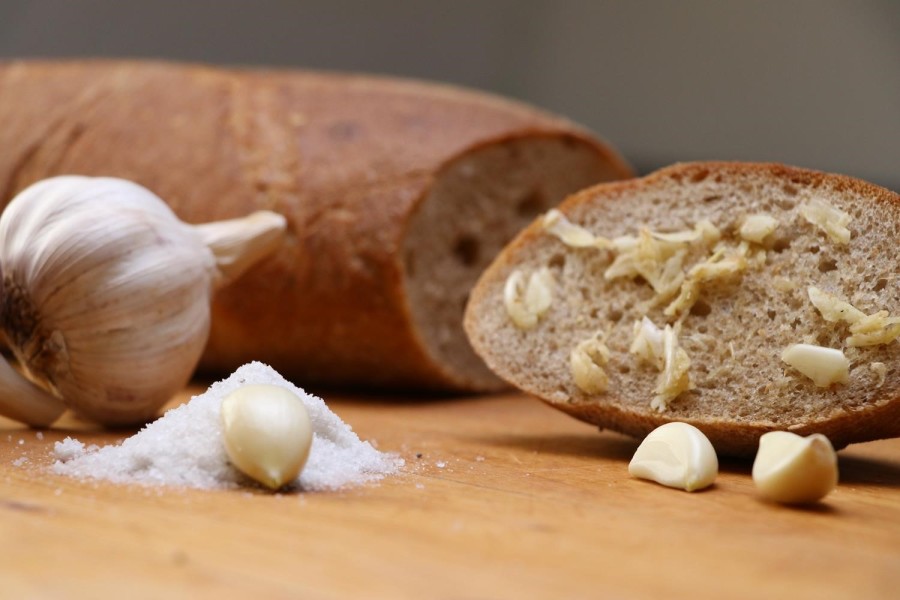
It is very interesting to understand what the real life of our ancestors was like. Today we will talk about food. Dorosh Heritage Tours invites you to travel back in time to the early 20th century and visit two picturesque Lemko villages: Malastiv (Маластів, Malastow) and Rozstajne (Розстайне, Rozstajne) in Poland and learn about local eating habits. We will use the help of two guides: Mr. Osyp Javorsky, an ethnographer who visited that area in 1918 and Mrs. Teresa Kyshchak, a native of Rozstajne, who was later deported from her village.
As you most probably know, Lemkos are one of the ethnic groups of the Carpathian Mountains. Lemko areas are located in present Poland, Ukraine, and Slovakia. The world of both villages, as well as the world of the majority of Lemkos, was ruined when most of them were deported to USSR and the former German territories in the north of present Poland in the 1940s.
So, let us get to happier times before deportation and learn more about their daily life, food, and eating habits, in particular. According to Mr. Javorsky, “Lemkos are doing very well from the economic point of view, the earnings in America being the main reason. However, one can notice their modesty in everyday life and meals. Their everyday food consists mainly of the fruit of their rocky plots they work so hard on”.
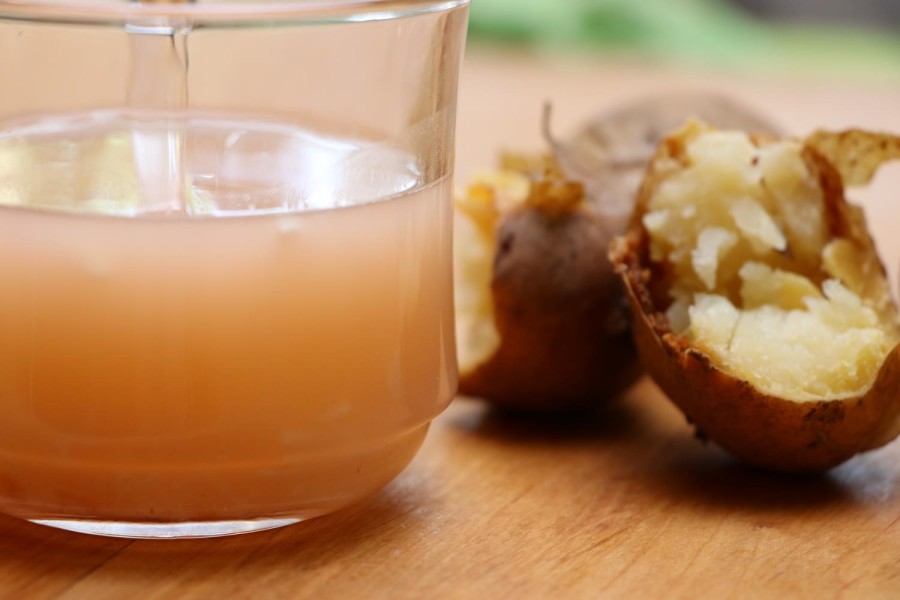
Bread, potatoes, cabbage, beans, and various kinds of cereal were the base of local cuisine. There was usually only one dish per meal on the table on regular days. On holidays, there could be several dishes served during the same meal, but they were the same as those cooked on regular days, as a rule. The meat was seldom eaten. It was saved for the most important holidays like Easter, Christmas, weddings, and funerals, as well as on extremely hard working days.
The day of a Lemko usually started at 5am, and the day of a Lemko housewife even earlier. She had to cook to be able to serve breakfast at 5-6am and work in the field afterward. The fire in the stove was lit twice a day, but there were usually 4 meals during the day. The stove was closed (learn more about traditional Ukrainian stoves here), and the food was left inside the stove to keep warm.
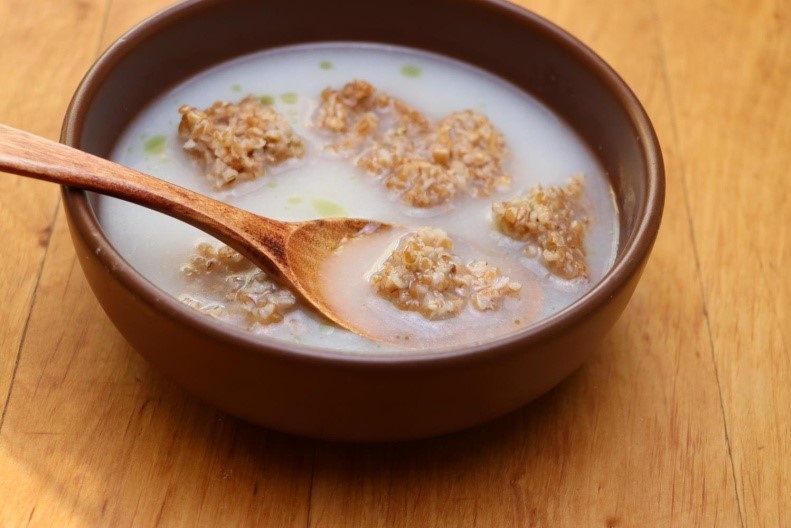
When fasting, the breakfast usually consisted either of bread with garlic and salt or baked “komperi”(potatoes) with jushka (a special local soup made of sauerkraut). On other days, it was bread with milk, butter or zhytnytsia (whey).
After about 2 hours of working, the housewife would start cooking lunch, usually before 8am. Lunch took place at about 12 noon in winter when the days were the shortest, and at 1-2pm during the rest of the year. Dinner was eaten right after the work in the field or the forest was finished. It usually consisted of the leftovers from lunch and the midday snack.
To understand what the menu of a Malastiv and Rostajne citizen was, let us have a look at the typical local dishes. They are characteristic of Lemko cuisine in general, and they impress with their simplicity.
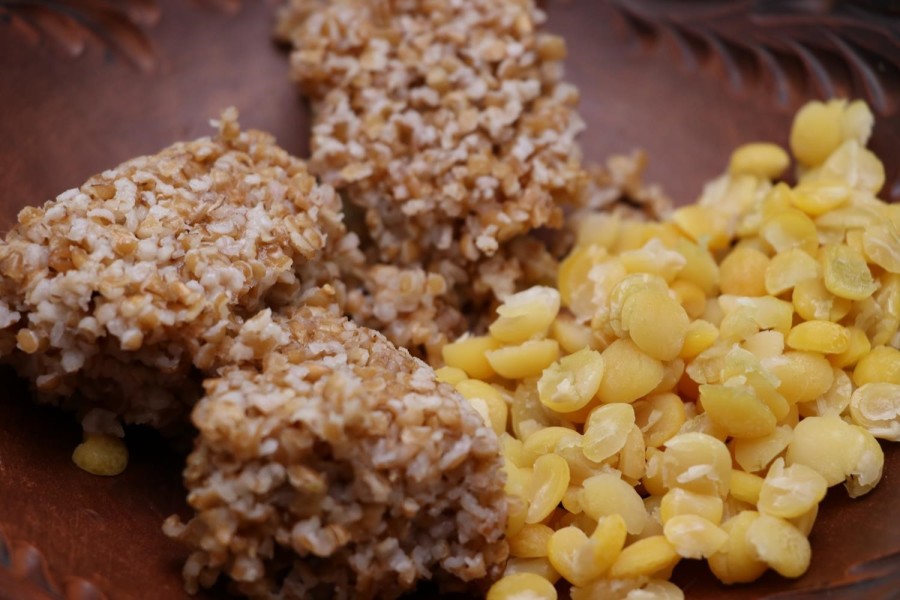
“Pentsaky” or “pantsaky”, is thick barley porridge, often cooked with mushrooms, dried cherries or plums. It was one of the daily Lemko dishes. Pentsaky was usually eaten with flaxseed oil, beans or peas. On holidays, it was mixed with milk or buttermilk, and it was cooked with tripe on big holidays, such as Easter and Christmas.
Most soups were made of sauerkraut juice. Pentsaky was often eaten with “Kyselytsia”, a thin soup made of oat flour and sourdough with cumin, salt and sometimes oil. “Krip” was another popular soup made of dill. It was very basic: the ground dill was put into the water and boiled. It was then put into the bowl and mixed with crumbled bread. In Rozstajne they also cooked a carrot soup with milk and “levesh”, a special potato soup with fried onions or sour cream.
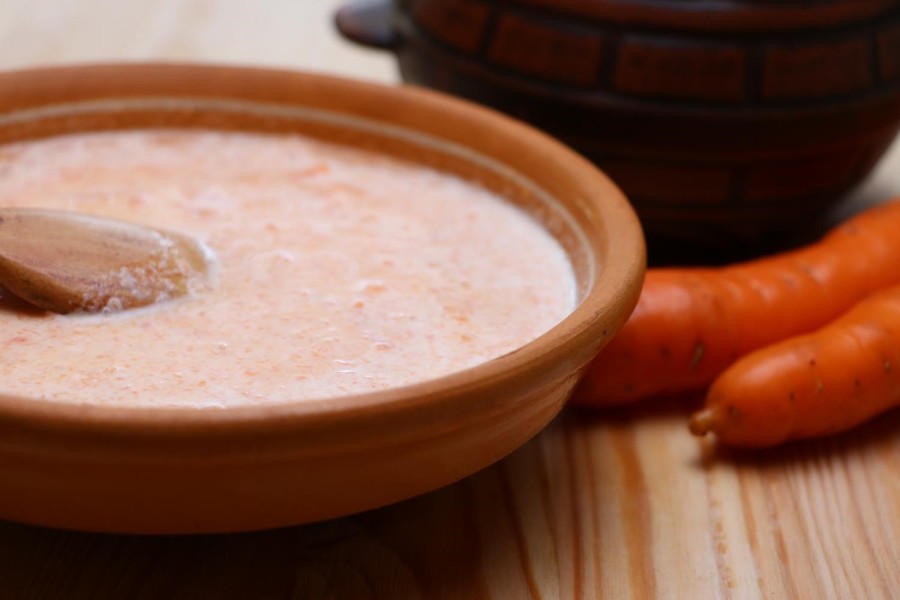
Millet and corn were among the most popular cereals. “Mastylo” was a mush made of wheat flour and milk. In Malastiv they added bryndza (a creamy white cheese, known for its characteristic strong smell and tangy taste, the cheese crumbly and slightly moist), and fried onions were added to mastylo. In Rozstajne, mastylo was mixed with butter and eggs.
Vegetables were highly respected in both villages. In Lemkivshchyna (Lemko region) potatoes were an everyday dish. They were served in many different ways: boiled, baked, with milk and dried fruit. “Banduriaky” are special pancakes made of potatoes and flour, baked on cabbage or maple leaves in the stove.
There was a large amount of cabbage consumed as well, mostly in the form of sauerkraut. It was preserved in barrels of 100-300 liters, and every family prepared several of them for winter.
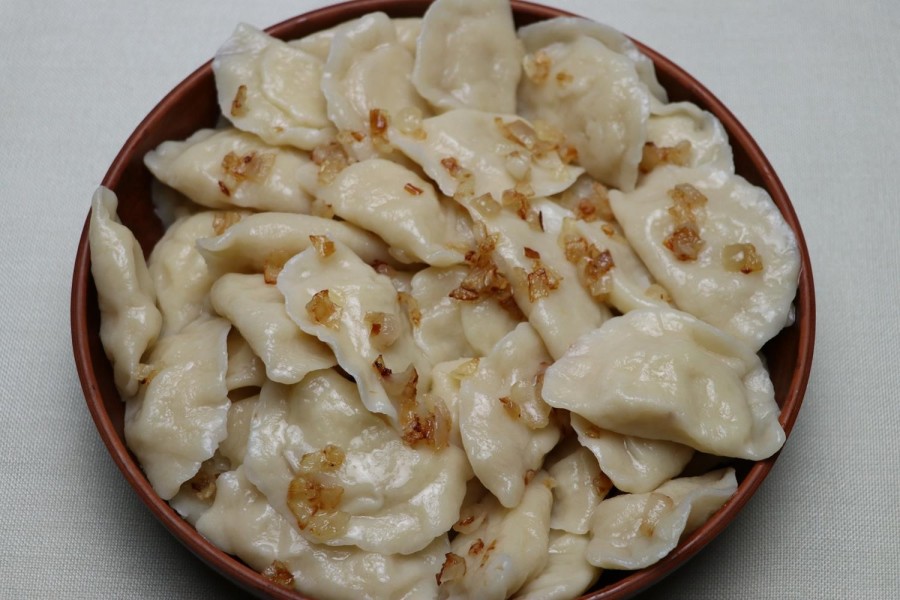
The dishes made of dough, especially dumplings with cheese or bryndza, were served with butter or fried salo (pork fat). Stuffed dumplings were made on holidays only, and they were filled with cheese, cabbage, jam, plums, and pears.
Bryndza, the cheese mentioned above, was made of sheep and cow milk in Rozstajne. A piece of dried veal stomach (the calf should be 1-2 weeks old) was added to the sheep milk. It was put in a warm place for the cheese to develop. This cheese was mixed with cow cheese, then salted, mixed well, and rammed down into a small wooden barrel. The barrel was covered with linen and a wooden cap. A rock was put on the top. Such cheese could be preserved for years: the more seasoned the better. Bryndza was the everyday food of Lemkos.
As I have said before, meat was not commonly eaten and then only on the bigger holidays, like Christmas and Easter, when it was boiled. Pork and beef were seldom eaten; Lemkos ate mostly chicken and rabbits.
As for drinks, regular water and sour milk were the most common. They also boiled fruit and berries to make compote and sometimes drank coffee. “Paliunka” (horilka or moonshine) was the most popular alcoholic beverage consumed mostly on “important occasions”: baptisms, weddings, funerals, etc. It was often infused with the roots of different herbs and warmed up before drinking. Beer was very common, while wine and mead were quite rare.
What was the holiday table like? For a baptism, they served soft-boiled eggs or fried eggs, cheese with sour cream and onions, butter, broth with potatoes, rice with milk, and cabbage with pork fat.
Wedding dishes were not much different, but the beef broth was served with boiled meat, and potatoes were very common. The bride also baked a special bread, “balets”, of first-grade flour with eggs and raisins. The wedding celebration often lasted for the whole week.
For funerals, the guests were treated with moonshine or beer. After the funeral, the family was treated with cheese, butter, bread and sometimes meat.
Traveling back in time as we have just done, you can see that our ancestors relied on simple foods for their nourishment, much of which they raised, grew and produced themselves. I trust you have enjoyed this brief look at the local eating habits of the Lemkos 100 years ago. Many of these foods are still consumed to this day in Ukraine and Poland, and in other parts of the world where many of our ancestors immigrated and settled. And the traditions around them continue as well.
Use this link to subscribe to my newsletter and receive updates about the next posts. If you need any help with your research, feel free to send me a message.
Literature:
People’s Food in Gorlytsia District. Joseph Javorskyi
Traditional Lemko Dishes. Teresa Kishchak